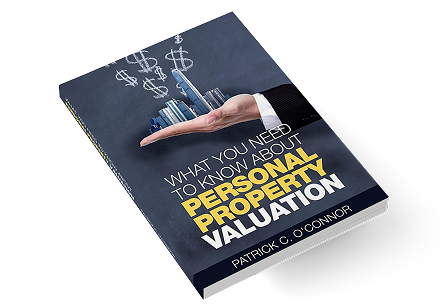Business Personal Property Tax 101
What Is Personal Property?
Business personal property includes tangible and intangible personal property. Real estate, minerals and tangible personal property are taxed in most states. However, no state currently applies a property tax to the intangible component of personal property. Some states solely tax intangible personal property such as bonds.

provide information on correct valuation procedures for personal property;
provide a series of insights into personal property applications; and
Evaluate personal property tax issues.
Valuation of personal property has become more complex during the last fifty years. Consider a company that spent $100,000 to provide employees with Apple watches.
Tangible personal property (plastic, metal and silicone) and
intangible personal property (patents, trademarks, software, data, proprietary manufacturing processes and research and development used to design the Apple watch)?
Another issue that needs to be considered is if there is intangible value due to a superior brand that realizes higher prices but may not have additional utility. An example would be the difference between an Apple phone and a Samsung phone. By some reports, the latest Samsung is superior, but the cost is much less.

Tangible Personal Property Defined
Tangible personal property can be seen, moved, touched and felt. It does not include real estate, or minerals. In general, it refers to physical objects that have value because of their utility. It does not include cash, stocks, bonds, contracts, patents, trade secrets, software, business enterprise value, going concern value, business processes and proprietary training programs.

Examples of Tangible Personal Property
Tangible business personal property can include household goods, automobiles, snowmobiles, boats, luxury items such as art and jewelry, other types of collectibles, office furniture and equipment, machinery and equipment, inventory, supplies, work in progress (of physical product and not services) and equipment for operating restaurant and services businesses. This is not necessarily a comprehensive list. The three key words to define tangible personal property is that it can be moved, felt and touched.
Understanding the difference between tangible and intangible personal property is essential to valuing it. Tangible property can be seen, felt, touched and moved. It has value based on its quality of construction, condition, functionality and supply and demand. However, the total value and the tangible value are not the same in most cases. Extracting the tangible value from the total cost is challenging for relevant types of personal property valuation.
Changes in Personal Property
In 1800 it was less difficult to differentiate the value of the tangible and intangible property. Eighty to ninety percent of the workforce was involved in agriculture in 1800. Seventy-two percent of population was involved in agriculture in 1820 (National Institute on Food and Agriculture and USDA) compared to less than one percent involved in agriculture today. Today intangible value is intertwined with tangible value in a manner difficult to separate.
Think about the change in the last forty years since 1977:
We skipped the following: CB radios, 8 Track players, cassette players, faxes, introduction of email, and the incredible growth in the U.S. productivity from 1985 to 2000 resulting from the introduction of computers.
Personal property appraisal is similar conceptually to valuing real estate. The largest differences are data sources and not the underlying theory of valuation. There are credible ways to develop opinions of value. The next steps to consider in valuation are the purpose of the appraisal, effective date of the appraisal, definition of market value, level of trade and whether intangibles are included.

ENROLL TODAY In the Property Tax Protection Program™
Free online enrollment in 3 minutes.
No cost unless taxes reduced, guaranteed.

